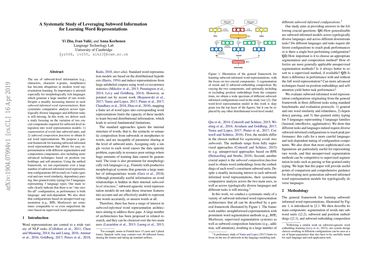A Systematic Study of Leveraging Subword Information for Learning Word Representations
The use of subword-level information (e.g., characters, character n-grams, morphemes) has become ubiquitous in modern word representation learning. Its importance is attested especially for morphologically rich languages which generate a large number of rare words. Despite a steadily increasing interest in such subword-informed word representations, their systematic comparative analysis across typologically diverse languages and different tasks is still missing. In this work, we deliver such a study focusing on the variation of two crucial components required for subword-level integration into word representation models: 1) segmentation of words into subword units, and 2) subword composition functions to obtain final word representations. We propose a general framework for learning subword-informed word representations that allows for easy experimentation with different segmentation and composition components, also including more advanced techniques based on position embeddings and self-attention. Using the unified framework, we run experiments over a large number of subword-informed word representation configurations (60 in total) on 3 tasks (general and rare word similarity, dependency parsing, fine-grained entity typing) for 5 languages representing 3 language types. Our main results clearly indicate that there is no "one-sizefits-all" configuration, as performance is both language- and task-dependent. We also show that configurations based on unsupervised segmentation (e.g., BPE, Morfessor) are sometimes comparable to or even outperform the ones based on supervised word segmentation.
PDF Abstract NAACL 2019 PDF NAACL 2019 Abstract



